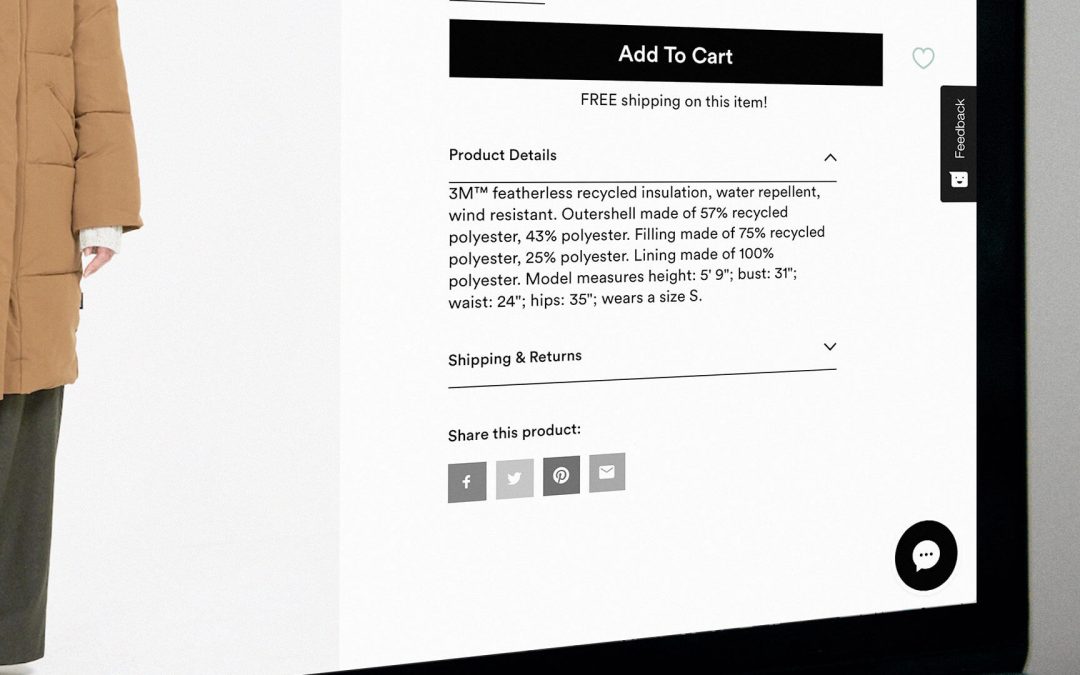In today’s visual world, there’s a lot to be gained from providing high-quality and consistent product images on your e-commerce website.
Just like customers who walk into a brick and mortar store do so because they like what they see in the shop window if you want customers to want to learn more about your products online, you need to offer stunning product photos. It is the visual appeal of a product that catches their attention. This is not just about looking good. It’s about providing visual evidence of the product attributes, its features, and, even, dimensions.
And if the customers like what they see, they are more likely to make a purchase. High-quality product images are critical to the success of any e-commerce platform today, and that’s exactly why they need to be carefully considered and put together.
Why images matter
When it comes to product sales, the first thing that engages customers and creates a sense of curiosity and excitement is the visual element. A good product picture not only creates a good first impression but it also makes it more likely for customers to want to stick around and explore the product in detail. Whoever said, “A picture is worth a thousand words,” said it for a reason. Using a single picture, you can convey so much more, than what you could possibly convey through a wordy description. The quality and relevance of your product images lay the foundation for the perceived value of your products as well as your brand’s image.
High-quality product images are a great way to convey your message and speak to your target audience. They help promote trust in the claims you make about the product. That will also translate into higher conversions and retention.
In the context of working with distributor partners, the right images can make onboarding of partners easier as it becomes just that bit easier to convey some key information about the products they are looking to add to the portfolio.
So, high-quality images can drive purchasing decisions, boost customer experience, and improve competitive standing. It’s also true that first impressions can make or break your online store.
Some tips and best practices
The product images you use across your online ecosystem form a critical part of your brand’s identity. These images help build the right perception, convey the right message, and evoke the right reactions. That being the case, it is essential to use high-quality product images.
Here are some best practices:
- Ensure product-level images are accurate and meet today’s high image standards.
- Allow customers to zoom-in as necessary to get a closer look at the product and demonstrate how customers can use the product through visuals to drive deeper engagement.
- Although it is natural for every product photo on your online platform to be unique, you must maintain consistency; make sure to use the same background, lighting, and image placement strategy for every product to build trust.
- If you are offering high-resolution images, make sure your website architecture is capable of supporting your image strategy; constantly monitor image load time and ensure it is in alignment with your page load time.
- Provide every possible viewing angle, so vendors/customers can enjoy a 360-degree view of products.
- When offering products in different colors, patterns, and styles, don’t just mention the colors and styles the product is available in; make sure to provide an image for each.
- Ensure end-to-end image collection and showcase your products just the way they would appear in real-life.
- Make sure to undertake QA and testing of every image you post on your online platform; edit and resize your product images for maximum engagement.
- Use accurate and relevant metadata for each of your product images to drive exceptional SEO across search engines; make sure to use the right caption or name for each product image.
- Make it a point to display size-comparison product images, so your customers can know for real how big or small the product actually is.
- Since every view and every click brings your customers closer to the purchasing decision, to help customers/vendors efficiently move along the buying journey, it may be useful to use different images for your category page and your product page.
- Centralize all product-image related information in a unified, organized location and save time publishing new images.
- Store all product images in your PIM or DAM system to enhance searchability, access and relevance among your distributors/retailers/customers.
- Automate workflows across your PIM and DAM systems and efficiently manage the process of creating, managing, formatting, and sharing high-quality product images with customers, resellers, and internal systems.
- Partner with a digital content specialist organization to get the right information to drive an effective product image strategy.
Make a good first impression
When it comes to driving sales online, there’s a lot B2B and B2B2C companies have to factor in. Since customers cannot touch and feel products being sold online, it is only through product descriptions, product images, and product videos that you can make a positive impression. Stunning product images are an integral part of how potential customers view your product and you as a brand. Given that, high-quality, consistent, and relevant images will help you boost conversions and drive online sales. And that’s the big picture!
